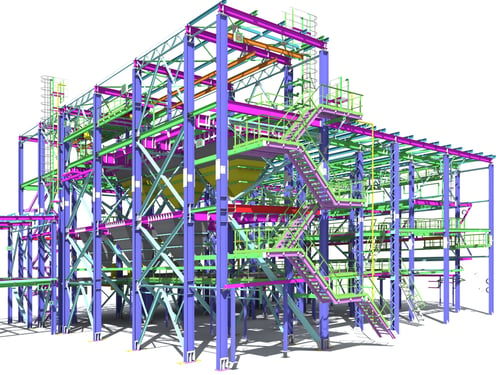When developers begin a new construction project, a common practice is to hire separate engineering firms to design mechanical, electrical, and plumbing installations. However, this approach creates a considerable management challenge, as the developer must coordinate project teams in separate companies, ensuring that all construction systems interact correctly.
There are also equipment vendors that offer design services, but the system configurations available are limited to that specific vendor's product offerings. The ultimate goal of vendors is to sell their own equipment, and developers don't have the chance to consider other solutions that might be a better fit for the project.
A simpler and smarter approach is to work with an MEP Engineering company, which covers many areas of expertise. This way, developers can delegate not only the technical aspect of design but also team management. Building systems cannot be designed in isolation, as they share physical spaces and have components that interact directly – for example, many types of HVAC equipment are powered by electricity.
Optimize your MEP design and reduce project costs.
MEP design is not just a technical challenge
MEP design appears to be a simple process, where the objective is to specify equipment and devices that meet the needs of the building. However, there are many challenges that go beyond functional aspects.
- Code Compliance: Even if a building system fulfills its intended function, it may not meet code requirements. For example, some codes specify additional safety measures or a minimum level of energy efficiency.
- Permits and other documents: A code-compliant design is required for project approval, but construction plans and specifications must also follow specific formats. Projects must be properly documented for approval.
- Meeting Deadlines: Construction cannot begin unless the design is approved, and in turn, the approval process requires a completed design. As a delayed project causes inconvenience and financial losses for the developer, completing the project on time is very important – effective team management is key.
- Cost Optimization: Ideally, a project's design should meet the owner's codes and requirements at the lowest possible cost. There is a common misconception that savings are only possible at the expense of performance, but this is not the case.
When building systems are designed in isolation, the project often becomes more expensive and the design process takes longer. Errors are also more likely and there may be equipment location conflicts and compatibility issues. The simplest way to avoid these problems is to work with an MEP engineering company that provides an integrated design.
Building codes and licensing formats represent a constant challenge as they are reviewed and updated by authorities at regular intervals. However, a qualified MEP engineering company is highly familiar with codes, documentation, and their latest requirements.
Enhancing the Design Process with Technology

Construction drawings were already drawn up by hand, a process that required a large number of man hours. Drawing has been greatly simplified with the development of computer-aided design, allowing for two-dimensional drawings in just a fraction of the time.
Modern design software is based on building information modeling , or BIM, where engineers can create a three-dimensional model of the project with material and equipment properties. This allows for better construction visualization and planning, and material lists can be calculated with automatic tools.
Advanced building models continue to be useful even after project completion as they can be used as a basis for building modifications and maintenance activities. The BIM file can be constantly updated to monitor the status of equipment and components, scheduling replacements well in advance.

